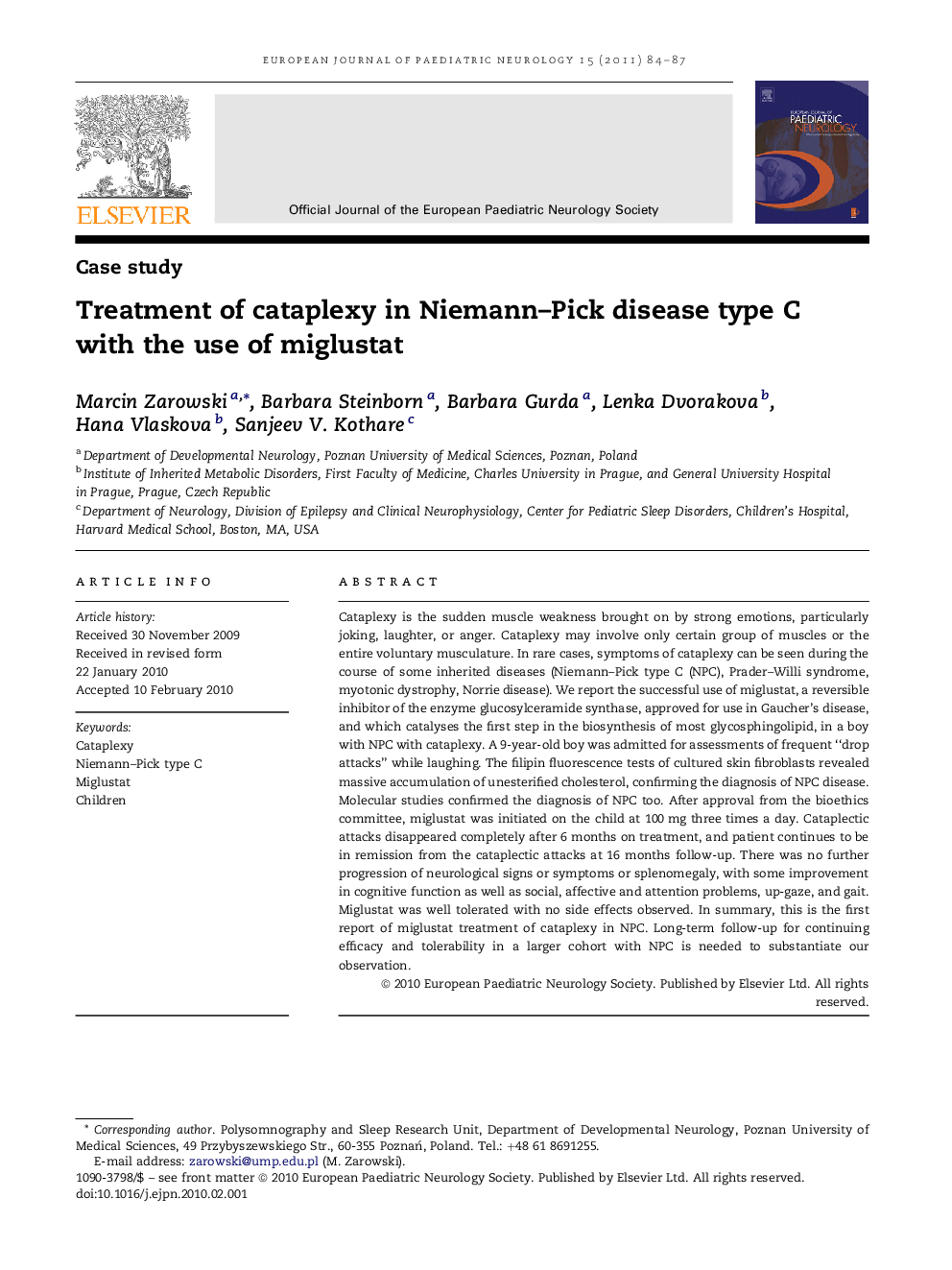| Article ID | Journal | Published Year | Pages | File Type |
|---|---|---|---|---|
| 3054393 | European Journal of Paediatric Neurology | 2011 | 4 Pages |
Cataplexy is the sudden muscle weakness brought on by strong emotions, particularly joking, laughter, or anger. Cataplexy may involve only certain group of muscles or the entire voluntary musculature. In rare cases, symptoms of cataplexy can be seen during the course of some inherited diseases (Niemann–Pick type C (NPC), Prader–Willi syndrome, myotonic dystrophy, Norrie disease). We report the successful use of miglustat, a reversible inhibitor of the enzyme glucosylceramide synthase, approved for use in Gaucher's disease, and which catalyses the first step in the biosynthesis of most glycosphingolipid, in a boy with NPC with cataplexy. A 9-year-old boy was admitted for assessments of frequent “drop attacks” while laughing. The filipin fluorescence tests of cultured skin fibroblasts revealed massive accumulation of unesterified cholesterol, confirming the diagnosis of NPC disease. Molecular studies confirmed the diagnosis of NPC too. After approval from the bioethics committee, miglustat was initiated on the child at 100 mg three times a day. Cataplectic attacks disappeared completely after 6 months on treatment, and patient continues to be in remission from the cataplectic attacks at 16 months follow-up. There was no further progression of neurological signs or symptoms or splenomegaly, with some improvement in cognitive function as well as social, affective and attention problems, up-gaze, and gait. Miglustat was well tolerated with no side effects observed. In summary, this is the first report of miglustat treatment of cataplexy in NPC. Long-term follow-up for continuing efficacy and tolerability in a larger cohort with NPC is needed to substantiate our observation.
